
We are excited to share with you groundbreaking studies that offer a comprehensive evaluation of BulbiCAM, our leading diagnostic tool. In a continuous quest to establish new standards in ophthalmic and neurological diagnostics, we have subjected the BulbiCAM to rigorous comparative analyses. These studies were conducted by esteemed institutions and aim to assess the reliability, precision, and advantages of our technology against existing industry standards.
Please read on to discover how BulbiCAM is not just meeting, but often exceeding, expectations in various key performance metrics, reinforcing its potential as an indispensable tool for healthcare providers.
Internal Pupil Test Assessment
A recent assessment conducted internally offered a comparative analysis of Bulbitech’s pupil test. The project assessed pupil parameters across 16 subjects, most of whom had varying ophthalmic and neurological pathologies. The comparative analysis was conducted using both the BulbiCAM pupil test and the Neuroptics pupillometer (NPI-300), a device currently considered the standard in NHS clinical practice. The testing environment was consistent for both devices, conducted in a dimly lit room.
Although the trial concluded that the BulbiCAM measured the pupil diameter ~0,5 mm less than the NPi, it also confirmed the following:
1. Reduced Variability
While a small variability was noted in the NPI measurements between the right and left eyes, BulbiCAM showed no such variance. (Figure 1):
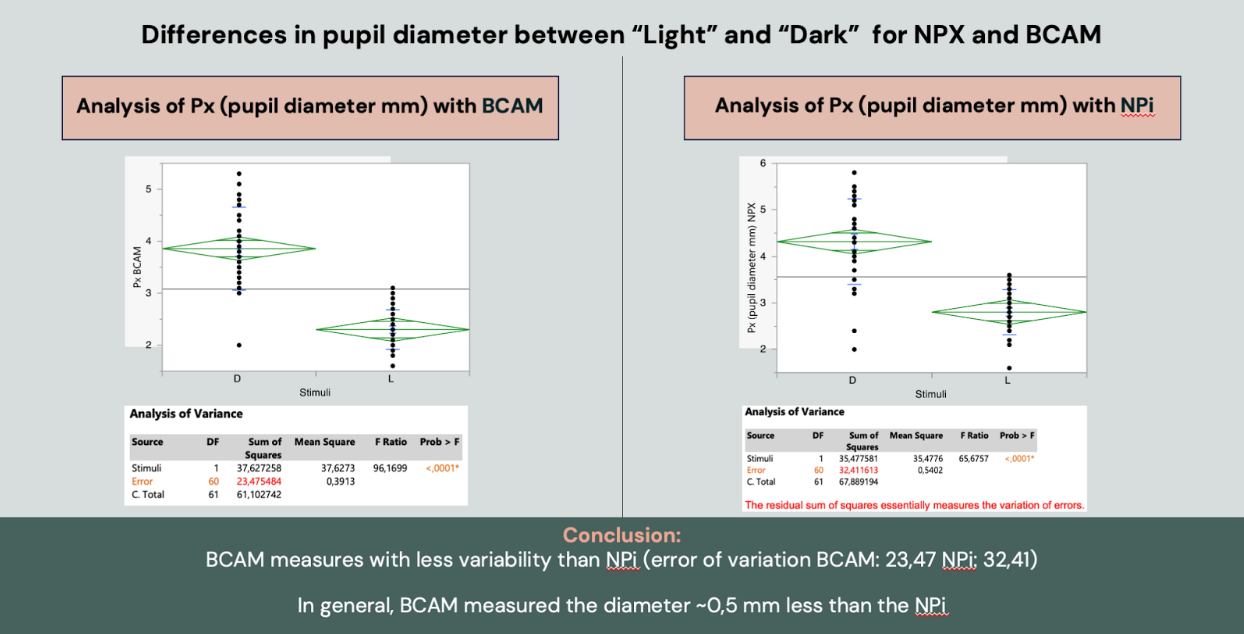
2. Consistency in Measurements
No significant differences were found between the measurements of BulbiCAM and NPI-300, whether measuring right or left eyes, in darkness or upon exposure to light. (Figure 2):
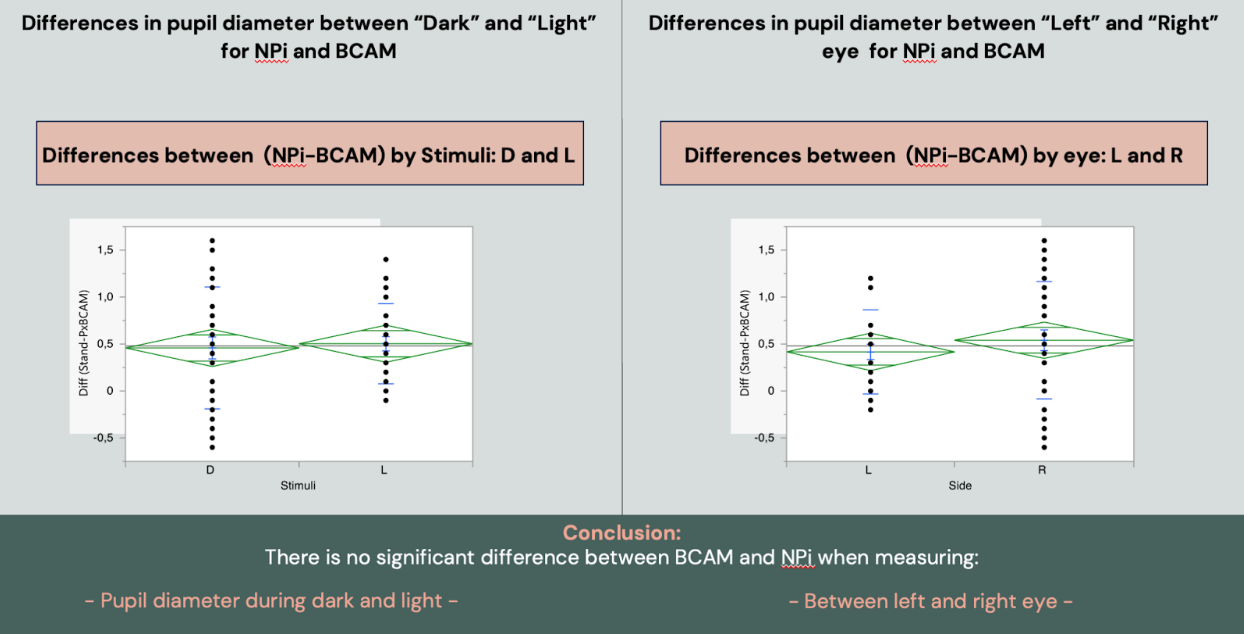
3. Agreement in Regression Analysis
Both BulbiCAM and NPI-300 showed no significant difference in regression analysis for pupil diameter, under varying light conditions. (Figure 3):
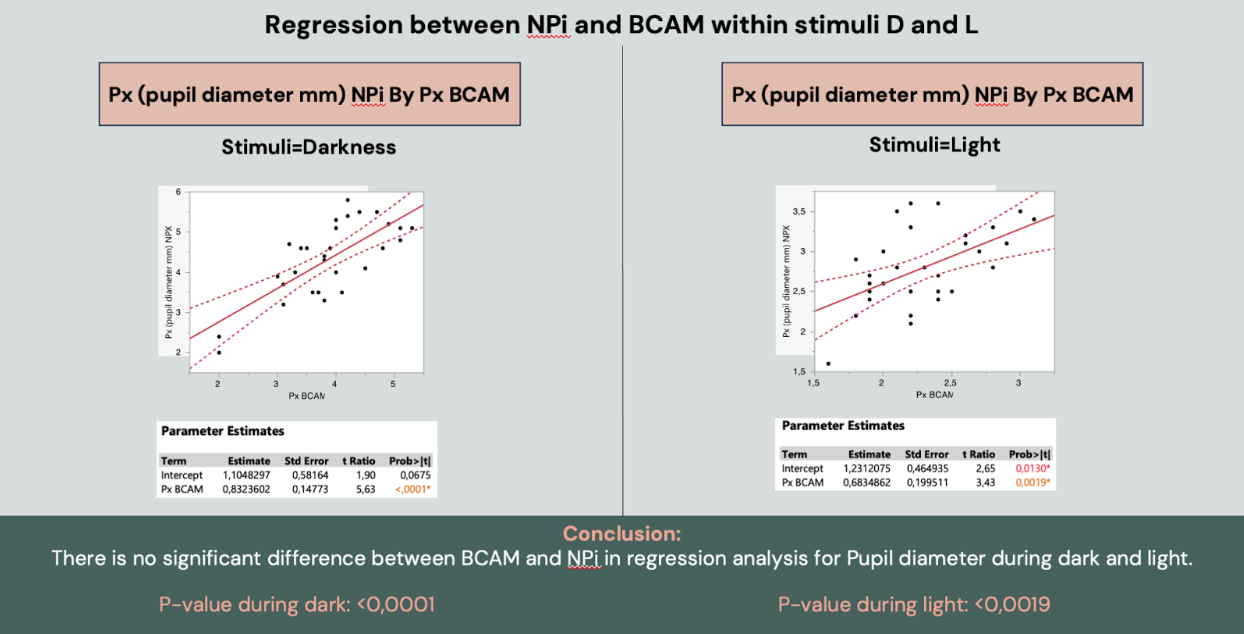
4. High Agreement Index
BulbiCAM displayed an excellent agreement index score of 0.91 (OS) and 0.86 (OD) for pupil latency measurements. Moreover, BulbiCAM offered a more controlled testing environment as it allows for binocular examination in an isolated setting. (Figure 4):
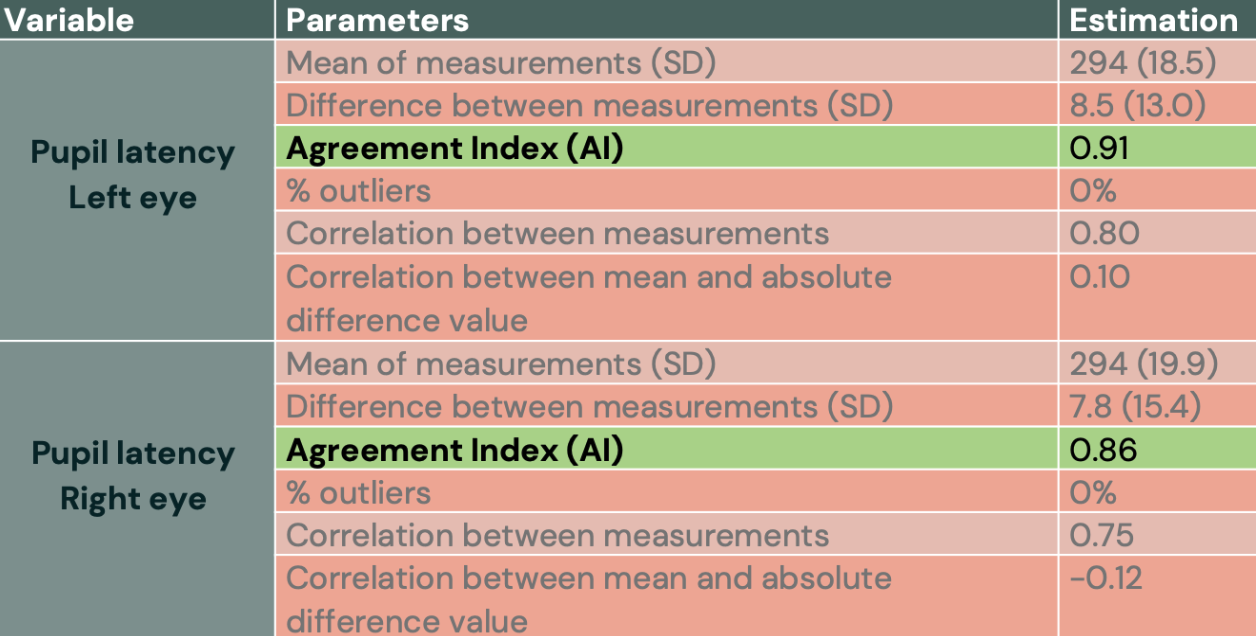
The Cardiff Institute of Optometry Study
Another study conducted at the School of Optometry and Vision Sciences, Cardiff University, compared BulbiCAM’s algorithm for evaluating Relative Afferent Pupillary Defect (RAPD) against the current gold standard: Neutral Density Filters (NDF). This trial included 20 healthy subjects and found excellent agreement between the two methods, thereby further establishing the reliability of the BulbiCAM system. (Figure 5).
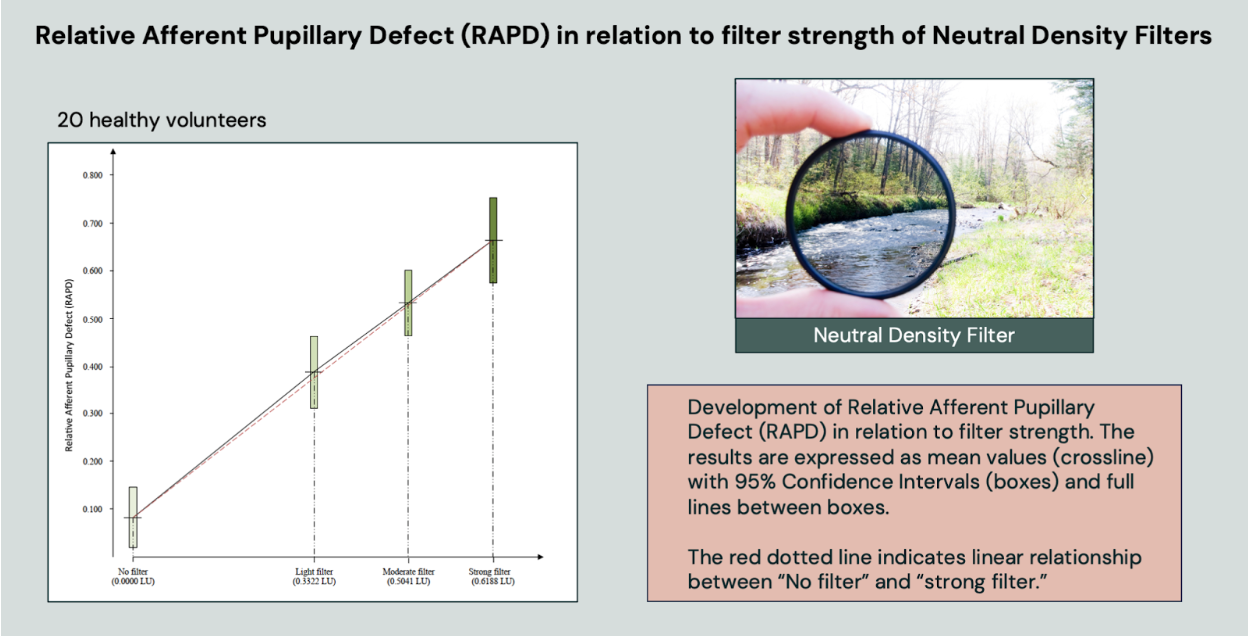
Conclusion
The studies reinforce the potential and efficacy of the BulbiCAM in both neurological and ophthalmic settings. Not only does BulbiCAM offer equal reliability when compared to existing technologies, but it also provides several advantages, including reduced variability in measurements and a more controlled testing environment. These attributes make it an invaluable tool for neurologists and ophthalmologists alike, marking a significant advancement in patient care and diagnostic precision.
